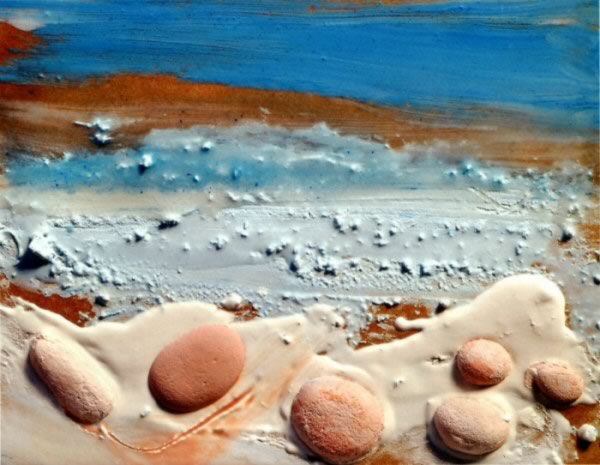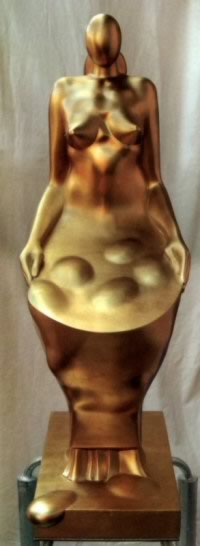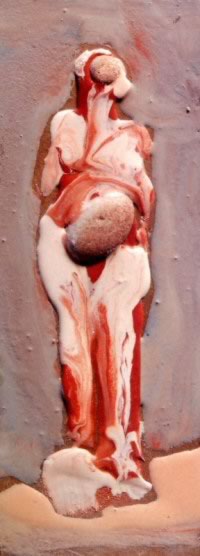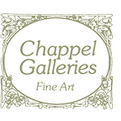
Stones on the Beach
Click
here to read more...
 |
|

Left - "Woman and Stones on the Beach" Resin and gold leaf
145 x 48 x 74cm
Above - "Mother and Child" resin and copper 125 x 79 x 15cm
Right - "Doris on the Beach" resin on board 121 x 8 cm |
|
 |
- please enquire
for prices -
ROLAND PICHÉ |
| |
DATE OF BIRTH -
1938 London
|
| |
|
|
ART EDUCATION
|
| |
|
|
1956-60
|
Hornsey College of Art
|
1960
|
Worked with sculptor Gaudia in Canada
|
|
|
| 1963-64 |
Part-time assistant to Henry Moore |
| |
|
TEACHING EXPERIENCE |
| |
|
|
Slade School of Art |
|
Royal College of Art |
|
Central School of Art |
|
Falmouth School of Art |
|
Gloucestershire College of Art & Design |
|
Chelsea School of Art |
|
Birmingham Polytechnic |
|
Lancaster Polytechnic |
|
Manchester Polytechnic |
|
Goldsmiths College of Art |
|
Loughborough College of Art |
|
Newcastle upon Tyne Polytechnic |
|
Newport College of Art & Design |
|
North Staffordshire Polytechnic |
|
Stourbridge College of Art |
|
Trent Polytechnic |
|
West Surrey College of Art |
|
Wolverhampton Polytechnic |
|
Edinburgh School of Art |
|
Bristol Polytechnic (Sculpture) |
|
Leicester Polytechnic (Sculpture) |
| 1964-89 |
Principal Lecturer, in charge of Sculpture, Maidstone College of Art Subject Leader, Sculpture, School of Fine Art, Kent Institute of Art & Design, Canterbury |
| |
|
ONE PERSON EXHIBITIONS |
| |
|
| 1967 |
Marlborough New London Gallery |
| 1969 |
Gallery Ad Libitum, Antwerp B
Middelheim Biennale, Antwerp B |
| 1975 |
Canon Park, Birmingham |
| 1980 |
The Ikon Gallery, Birmingham
Minories Galleries. Colchester 'Spaceframes & Circles' |
| 1993 |
Kopp-Bardellini Agent Gallery. Zürich CH |
| 2001 |
Glaxo Smith Kline - Harlow Research Centre |
| 2005 |
Chappel Galleries, Essex |
| |
|
GROUP EXHIBITIONS |
| |
|
| 1962 |
Towards Art T, Royal College of Art |
| 1963-4 |
'Young Contemporaries', AID Gallery |
| 1964 |
'Young Contemporary Artists', Whitechapel Gallery
Maidstone College of Art Students' Show
New Metropole Arts Centre, Folkestone |
| 1965 |
Towards Art II', Royal College of Art
Sculpture at Arts Council
The New Generation' 1965, Whitechapel Gallery
Whitworth Art Gallery Manchester Summer Exhibition
Marlborough New London Gallery
4th Biennale de Paris |
| 1966 |
The English Eye', Marlborough-Gerson Gallery, New York
'Structure 66', Arts Council of Gt. Britain Welsh Committee |
| 1967 |
Pittsburgh International Museum of Modern Art, Carnegie Institute |
| 1968 |
'New Generation', Whitechapel Gallery
Gothenburg Museum. Sweden, with Jack Smith
"Englische Kunst der Gegenwart', Kunstverein, Hamburg
'British Sculpture at Coventry Cathedral' |
| 1970 |
Kelpra Prints, Hayward Gallery Southbank
'British Sculpture out of the Sixties', ICA |
| 1971 |
'Le Surrealisme et son Ombre Portee', Baudunst Gallery, Cologne |
| 1972 |
'British Sculptors 1972', Royal Academy of Arts
Silver Jubilee Exhibition - 'Contemporary British Sculpture', Battersea Park, London
'British Sculpture', Redfern Gallery |
| 1973-74 |
Globe Playhouse Trust. London |
| 1979 |
'British Drawings since 1945'. Whitworth Art Gallery, Manchester |
| 1981 |
'British Sculpture in the 20th Century', Whitechapel Art Gallery |
| 1982 |
'Sculpture in the Park', Cheltenham
'Eight Sculptures - Two Decades', Oriel Gallery, Welsh Art Gallery |
| 1987 |
'Revelation for the Hands', Leeds City Art Gallery
The Mead Gallery, University of Warwick Arts Centre 1989-93 'Sculpture at Canterbury', Herbert Read Gallery |
| 1992 |
R.B.S. Exhibition, Woodland Gallery, Blackheath, London
Selected Exhibition, Minories Gallery, Colchester |
| 1993 |
The Sixties', Barbican Gallery, London
Chelsea Harbour International Sculpture Exhibition, London
Sculpture at Rochester Cathedral
Chappel Galleries, Essex
Kopp-Bardellini Agent, Zurich |
| 1994 |
Galerie Anita Dosch, Zurich
Drawings at Shadmore Gallery, London
Royal Academy of Arts Summer Exhibition, London |
1995 |
Royal Academy of Arts Summer Exhibition, London
Tower Bridge Piazza Sculpture Expo 95
Gallery Differentiate & Coombes Contemporary |
1996 |
Royal Academy of Arts Summer Exhibition |
1997 |
Royal Academy of Arts Summer Exhibition |
1998 |
Royal Academy of Arts Summer Exhibition
'Paper Works', Royal West of England Academy
Diana Moon Gallery, Piccadilly, London |
| 2004 |
'Spectrum' Exhibition, London |
| |
|
AWARDS |
| |
|
| 1961 |
Walter Neurath prize |
1964 |
Gallery, prize, Young Contemporaries Bronze Medal, Royal College
of Art
|
1965 |
Peter Stuyvesant Foundation Travel Bursary, 4th Biennale de la
Ville de Paris
|
1966 |
Structure 66, Arts Council of Great Britain, Welsh Committee (1st Prize)
|
1968 |
Commission Prize, Moorgate Sculpture Competition
|
1977 |
Arts Council of Great Britain Award |
1979 |
Eastern Arts Association Award |
1984 |
A Sculpture for Aberdeen, Scotland, cast at Morris Singer Bronze Foundry
|
1992 |
The National Sculpture Commission, Nene College, Northampton |
| |
|
PUBLICATION COLLECTIONS |
| |
|
|
Royal College of Art |
|
Peter Stuyvesant Foundation |
|
British Council |
|
Western Australia Art Gallery |
|
Sao Paulo Museum |
|
Arts Council of Great Britain Gothenburg Museum. Sweden Whitworth Art Gallery, Manchester |
|
Museum of Modern Art, New York Eastern Arts Association Aberdeen, Scotland Nene College, Northampton |
| |
|
OTHER INFORMATION |
| |
|
| 1976-8 |
Member of Fine Art Panel (NCDAD) CNAA |
| 1980 |
Fine Art Panel, Arts Council |
| 1981-2 |
Constructed new studio |
| 1982 |
Research & Development: Masterpiece Project |
| 1983 |
Sabbatical visit to Italy, Carrara Quarries |
| 1983-4 |
Masterpiece Project: Michaelangelo casts in conjunction with Victoria & Albert Museum and Royal Academy of Arts |
| 1985 |
Development of a new body of sculpture |
| 1992 |
Decision to promote sculpture in Europe
Made a Fellow of the Royal Society of British Sculptors
Speaker - 'Sculpture in Education', Manchester University Conference |
| 1995 |
Selector for the Jack Goldhill Sculpture Award, Royal Academy of
Arts |
| 1996 |
Curated an exhibition and catalogue: 'Bronze Sculpture' with Antony Caro, Elisabeth Frink, Henry Moore and Eduardo Paolozzi, at the Herbert Read Gallery, KIAD Canterbury |
| 2000 |
500 catalogued collection of work |
| 2003 |
Proposal for Memorial Monument, Ground Zero, Lower
Manhattan, N.Y.
Retired from education and the Kent Institute of Art & Design Interview tapes for 'National Life Story' sound archive collection |
| 2004 |
Major commission for two sculptures for Lovells, Paris
'Spectrum' promotion exhibition, Commonwealth Institute
Commission presentation in Dubai
Art for Offices, London, promotion exhibition |
| 2005 |
Work selected for main entrance, 1, London Wall (Norman Foster);
May: Exhibition at the Henry Moore Institute, Leeds, of proposed
Ground Zero Monument in New York in 2003; August/September:
Exhibition 'Stones on the Beach' at the Chappel Galleries, Essex |
To those familiar with the work of Roland Piché this exhibition may come as a surprise. It is ostensibly two dimensional, and at first sight has little affinity with previous work exhibited throughout a distinguished and varied career. This exhibition is not a retrospective, it is an absorbing and intriguing presentation of previously unseen work revealing yet another dimension of an artist whose devotion to tradition and insight into the classical ideal is matched by a continued and undiminished investigation into alternative, yet synthesised life forces. Interest in, and study of, the classical is enriched by a greater emphasis on the Dionysian and on the romantic, the spontaneous, the arbitrary, and above all the vital role played by chance. A force which operates inexorably and with impunity through our supposed ordered universe.
Piché’s continued fascination with the reconciliation of apparent opposites led to a study of metaphysics and this has influenced and enriched both his teaching and his art. Much of his work references the history of ideas before science, the arts and philosophy parted company. Newton offered his discoveries to astronomers and philosophers, Kant combined philosophy with the natural sciences but thereafter the equation of philosophy with a scientific world was rapidly discarded. By the nineteenth century Max Weber had decisively divided culture into science, morality and art. Thereafter attention was focused on the introspection of the consciousness and the psychological.
Hannah Arendt has observed that this marked the beginning of pessimism, but that it did not signal the obsolescence of philosophy. She wrote, “Whatever is authentic possesses the same permanence and durability as art works, but in this case closely related to the eventual evolution of a world where truths for many centuries accessible only to the few have become truths for everybody" (Arendt, Hannah, The Human Condition, second ed, University of Chicago, 1998, p.272). in the relatively short time since these words were written there have been many challenges to both permanence and durability in the world of art, but few of these assaults facilitated accessibility!
The avant garde of the sixties questioned the continuing centrality of painting and sculpture. Abstraction and figuration erected respective boundaries and definitions which excluded or confined but frequently confused. There were intense preoccupations with claims and counter claims for the primary of many issues. Attitudes, origins, commodification, originality, appropriation, class, race and gender all invited critical interest and endless debate. Modernist theory vied with modernist art to establish a prototype, as history was discarded and the absolute embraced. Before such hegemony alterative paradigms were decisively marginalised. lt took the paradoxically reassuring uncertainties of post modernism to break down the strictures of modernism.
Yet for many artists and critics the definitions of the new orthodoxy remained contested and complicated. The frequent vagueness of the ensuring debate led to a void that was to prove encouraging for many artists. Theories surrounding value receded and art was no longer necessarily an integral part of intellectual culture. In many well publicisecl and handsomely rewarded examples art became a lifestyle issue dictated by fashion. The imperatives were for instant and limited gratification which characterises so much of popular culture.
At the outset of his career Roland Piché was recognised as independent. lt is a stance he has unselfconsciously and resolutely maintained, having never been part of a group or a puiveyor of popular or limited ideas. Consider the work you see here. There is a strong suggestion of the three dimensional. There are also references to Christianity, to Humanist tradition, to pre Christian Western art and the visual traditions of ancient Egypt. There is spontaneity inherent in the artist’s use of resin, and the depiction of the women on the beach. There is fragmentation and a discernible difference in the situation and dominant tradition of each highly individual figure. But there is also an over arching unity of understanding and purpose although we know we are looking at a divided reality.
We have before us many layers of meaning and interpretation, but this diversity is not the language of value free and arbitrary cultural cannibalism that has characterised far too many exhibitions. These works incorporate what the artist describes, quite simply, as his "core" values. They were espoused in his youth and he has been true to them. The questions he asked then have not been forgotten or corrupted, they have been reiterated, and in many instances consolidated by the insights provided by maturity and a determination not to lose sight of those principles of sculpture on which so much rests.
Roland Piché has never admitted a hierarchy of material or process. We do not usually organise a hierarchy of language and yet we can manipulate, intenogate or elevate the language at our disposal to take us to the desired level of communication. The magnificent Woman And Stones On The Beach consolidates these ideas, and invites comparison with his previous work. This figure which alludes to all the powerful goddesses of ancient Egypt and signifies both procreation and destruction. She is also deeply centred by gravitational force,. but her inherent core is also found in the sea and its tides. The gravitational pull of the moon, the "watery star" is also present in not only the force of the figure but in its luminosity. She is at one with the sea, its sudden changes and ultimate indifference to the aspirations or fears of humanity and its suffering. This is nature at its most elemental, a preoccupation of the scientists but irresistible to the rornanticl The true reconciliation of differences.
Baudelaire wrote that beauty has a dual aspect, the mutable and the unchanging. So does the work of Roland Piché.
Kate Hughes |


